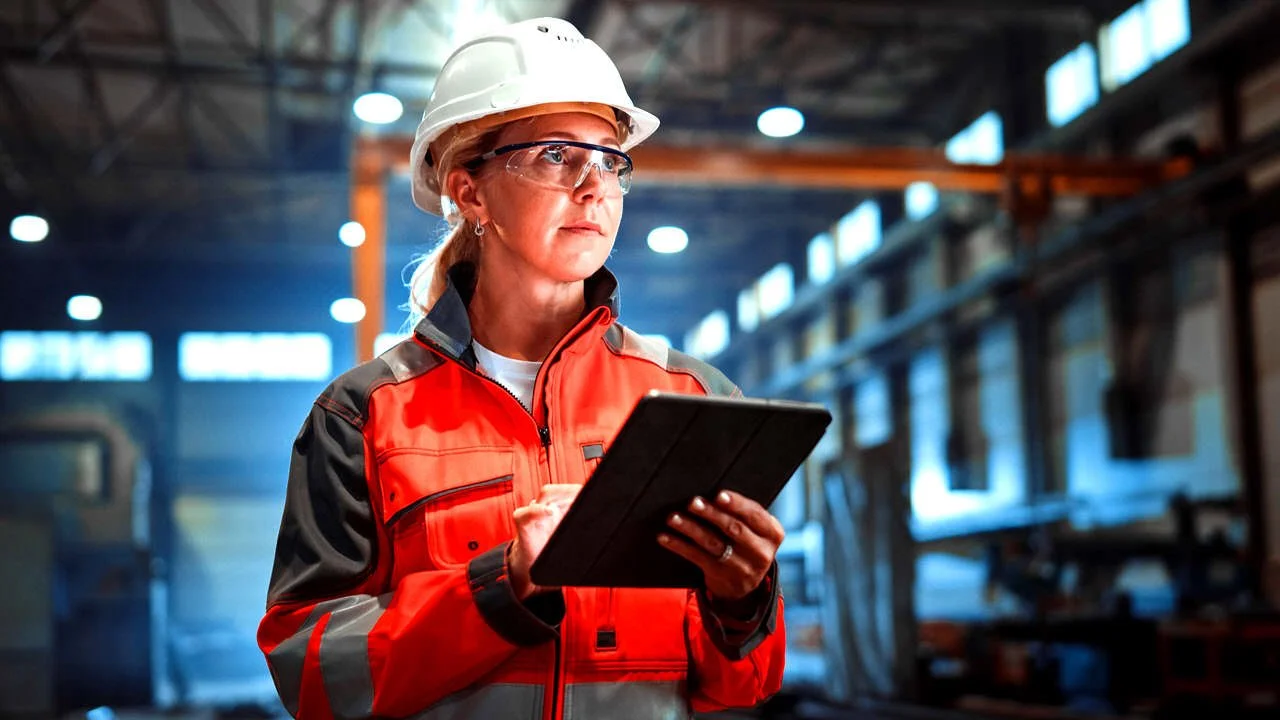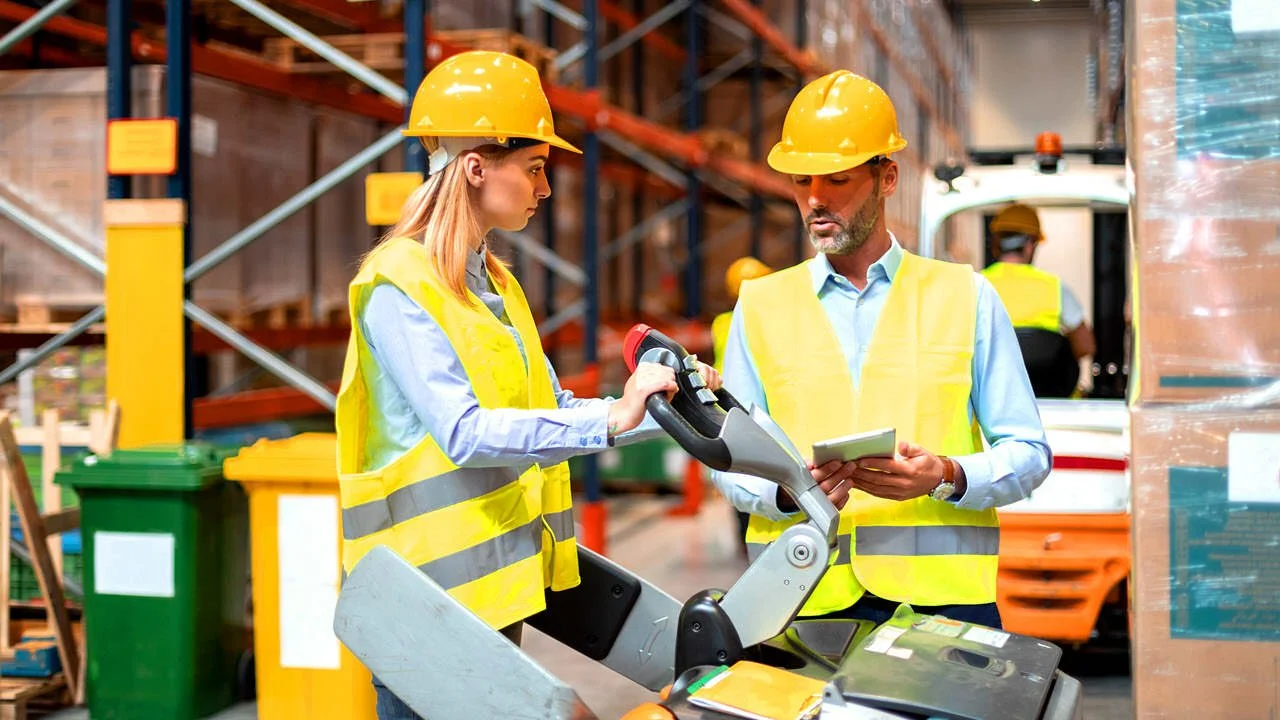Forklift Pedestrian Detection Systems: How They Work + ROI Benefits
Explore how forklift pedestrian detection systems improve warehouse safety. Get ROI insights and real-world results from AI-powered technology.
AI pedestrian detection systems are more than just safety upgrades—they're strategic business tools. In this guide, I break down how to align forklift safety system installation with OSHA compliance, maximize ROI, and navigate the industrial safety technology procurement process as a vendor-neutral safety integrator.
In the fast-paced world of warehousing, manufacturing, and logistics, forklifts are indispensable. They move goods efficiently, but they also represent one of the top recorded safety hazards for industrial environments. Every year, forklift–pedestrian collisions lead to costly injuries, downtime, and compliance issues.
AI-powered pedestrian detection systems have emerged as a transformative solution.
That's why forklift safety system installation has become a critical priority for companies that want to both protect their people and meet regulatory obligations. AI-powered pedestrian detection systems have emerged as a transformative solution, offering not just compliance with forklift safety guidelines but measurable improvements in efficiency, risk reduction, and bottom-line performance. As a vendor-neutral safety integrator, my goal is to help businesses cut evaluation and deployment time by up to 50% while ensuring every dollar invested drives tangible safety and productivity gains.
Consider this: A mid-sized distribution center recently reduced its forklift incidents from 12 per quarter to just two after implementing AI detection systems. The operations manager told us, 'We went from dreading safety meetings to celebrating them.' This transformation isn't unique; it's becoming the new standard for companies serious about both safety and profitability.
"The right safety technology isn't just about preventing accidents—it's about enabling your business to operate with confidence, efficiency, and measurable ROI. It becomes a strategic advantage, reducing risk while improving productivity, strengthening your safety culture, and giving you the operational clarity to grow without hesitation. When chosen and implemented correctly, it's not just a safety measure—it's a business accelerator."
Smarter Systems for Safer Spaces
AI cameras that see what humans can't
Modern AI-powered pedestrian detection systems use advanced vision algorithms to identify and track people in real time. They work even in blind spots, low light, or cluttered environments—conditions where human operators struggle most. This allows forklift operators to receive instant alerts, reducing reaction time and preventing collisions. Unlike proximity-based systems that require every worker to wear a tag, vision systems can be deployed universally without changing workforce habits—an advantage in high-turnover or multi-tenant facilities.
Learn more about our AI Pedestrian Detection Implementation Services.
Blending Automation with Human Factors
Technology is only as effective as its adoption.
Even the most sophisticated safety systems fail without workforce buy-in. That's why successful deployments prioritize three key elements: intuitive operator interfaces, clear visual and audio alerts, and minimal false positives.
But technology alone isn't enough. Adoption requires proactive change management—training sessions, hands-on demos, and visible leadership support. Here's what we've learned: when forklift operators understand both the safety and productivity benefits, resistance melts away. One operator recently said, 'I thought this would slow me down, but now I move faster because I'm more confident.' That confidence translates directly into fewer incidents and higher productivity.
Explore our Forklift Safety Training Programs.
Data-Driven Operational Insight
From reactive compliance to proactive safety leadership
AI pedestrian detection systems aren't just about alerting—they're about learning. Every near miss, alert, and pedestrian interaction is logged and analyzed. Over time, patterns emerge: high-risk intersections, peak congestion times, and recurring operator blind spots. This data can be leveraged to redesign workflows, justify capital investments, and strengthen OSHA compliance documentation.
For example, one client discovered that 78% of their near-misses occurred at a single intersection during shift changes. Armed with this insight, they redesigned the traffic pattern and reduced incidents at that location to zero. Another client used heat maps to identify their safest operators and created a peer mentoring program that improved overall safety scores across their entire fleet.
An external reference worth reviewing: OSHA Forklift Safety Guidelines provide a baseline for compliance, but AI data adds a predictive layer, helping companies move from "meeting standards" to "setting standards."
ROI and Procurement Strategy
Why smart buying decisions pay for themselves
An AI pedestrian detection system isn't just a capital expense—it's a strategic investment. By reducing incidents, companies can lower workers' comp claims, avoid regulatory fines, and reduce insurance premiums. Beyond direct cost savings, consider the hidden benefits: reduced training costs for replacement workers, eliminated production delays from incident investigations, and improved employee morale that reduces turnover. For many clients, ROI is achieved in under 12 months through a combination of incident reduction and operational efficiency gains.
The procurement process should be intentional. As part of our industrial safety technology procurement services, we evaluate multiple vendors, compare vision vs proximity system capabilities, and negotiate pricing on behalf of our clients. Our vendor-neutral safety integrator approach ensures you get the best fit for your environment, not just the product from a single manufacturer.
Visit our Procurement Services Page.
Incorporate operator training, compliance documentation, and ongoing calibration schedules.
Actions Today
Audit Your Current Safety Systems: Map forklift routes, pedestrian pathways, and blind spots to create a baseline risk profile.
Pilot an AI Detection System: Test in a high-traffic zone to measure accuracy, operator feedback, and workflow impact.
Plan for Adoption, Not Just Installation: Incorporate operator training, compliance documentation, and ongoing calibration schedules.
Leverage the Data: Use analytics to improve layouts, update OSHA compliance records, and guide strategic safety investments.
Conclusion
The warehouse of the future is already here—autonomous vehicles, real-time safety analytics, and AI-powered pedestrian detection are setting new industry benchmarks. But adopting these technologies isn't just about keeping up, it's about getting ahead.
Companies that invest in the right system, with the right implementation partner, see measurable ROI that goes beyond incident reduction. They gain higher operator confidence, faster compliance audits, improved insurance ratings, and the competitive advantage that comes from being known as the safest, most efficient operation in their market. Those who wait risk more than accidents; they risk losing competitive advantage to smarter, safer competitors.
By aligning your safety technology with compliance requirements, operational realities, and long-term business goals, you create a safer workplace that doubles as a more productive, more profitable one.



